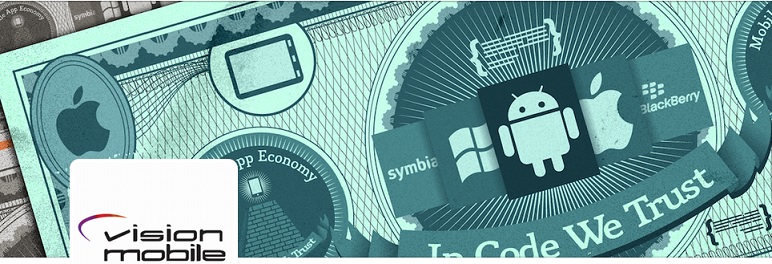 The nascent sector of the Internet of Things (IoT) will fundamentally change the shape of e-commerce in the coming days since any connected object could become a distribution surface and customer acquisition channel for consumables. More importantly, the IoT will allow e-commerce to stretch across the breadth of the customer’s journey.
The nascent sector of the Internet of Things (IoT) will fundamentally change the shape of e-commerce in the coming days since any connected object could become a distribution surface and customer acquisition channel for consumables. More importantly, the IoT will allow e-commerce to stretch across the breadth of the customer’s journey.
These and other key messages form part of a recent report titled, ‘The Commerce Of Things’, published by the London-based analyst company VisionMobile. The latter is one of the leading analyst companies in the app economy and the developer ecosystem.
The report, a copy of which was available with this Website, explored the “untapped” e-commerce opportunities for software developers, both – those working on mobile apps as well as the IoT projects.
The report pointed out that e-commerce was already the biggest revenue generator among mobile developers. The latter, using e-commerce (for physical or digital goods) had median monthly revenues of US $1,000-$2,000 compared to a “measly” $200-$350 median monthly revenue for mobile developers across all revenue models. Yet, according to VisionMobile, only a small share of mobile developers (9 per cent) had chosen to work with e-commerce. This was based on the company’s 9th, ‘Developer Economics Survey’ conducted in May 2015 of over 13,000 software developers.
The rise of mobile commerce provided developers with “an unprecedented revenue opportunity”, if only they were to acknowledge it and seize it. E-commerce models also generated good returns, with 16 per cent of IoT developers who used e-commerce of physical goods generating more than US $10,000 per month, while the equivalent figure for those working with ecommerce of digital goods was 20 per cent.
The report said of all the IoT developers, 57 per cent were hobbyists and explorers, and 59 per cent of the IoT developers were earning under US $500 per month, based on the May survey of 3,150+ IoT developers.
The UK analyst firm estimated that there were 4.5 million IoT developers in the world today, a community in an early phase that was set to grow at a CAGR of 17 per cent through 2020. VisionMobile’s surveys and app analytics tracked the changing landscape of mobile, IoT, desktop and Cloud developers. Its research program, ‘Developer Economics’ was one of the largest, most global developer research & engagement programs, reaching more than 25,000 developers annually in 149 countries. It tracked developer experiences across platforms, revenues, apps, tools, APIs, segments and regions.
The report’s other observations:
- IoT was growing largely thanks to mobile developers
- 53 per cent of the world’s 5.5 million mobile developers in 2014 also worked on IoT projects, growing to 59 per cent out of 6.3 million developers in 2015
- iOS remained the most lucrative e-commerce platform
- 50 per cent of the developers targeting iOS with e-commerce revenue models are pulling in more than $10,000 a month, excluding those who are not interested in making money
The report said the IoT was set to fundamentally change the shape of e-commerce. Amazon’s Dash and DRS service offered an early glimpse of this model. The IoT, the report pointed out, extended e-commerce affiliate and user acquisition schemes beyond Websites, mobile, and apps, into any physical surface.
With the IoT, washing machines could now not just deliver detergent in time by knowing when a user’s supplies had run out, but they could also recommend the right detergent, based on usage, type of clothes, on demand. Car makers could recommend where owners could buy gas by understanding the drive journey, availability of gas stations, pricing on-demand discounts, and gas station commission – in fact Google’s Waze was doing this already. In short, the IoT makers could now afford a negative BOM (bill of materials) “à la Dell”, by subsidizing the cost of hardware with the revenues from bundled e-commerce services. The IoT would now allow any connected “thing” to become an affiliate for e-commerce goods that were consumed together with the “thing”.
Closing the attribution loop
More importantly, the report added, the IoT would allow e-commerce to stretch across the breadth of the customer journey.There was no way for advertisers to know when a real purchase was made in a brick-and-mortar shop, let alone make someone with purchase intent visit that physical shop in the first place. This was the holy grail of advertising business – to be able to track consumer behavior from awareness to intent to purchase to purchase, and across Web, mobile and increasingly a number of physical connected touch points. By embedding the e-commerce discovery and distribution surface on physical objects, and more connected touch points across the customer journey, companies were now able to cross the last mile from awareness to purchase intent to purchase.
Put simply, connected devices will become the optimum point-of-sale for e-commerce, search boxes and app stores for services, at the ideal place and ideal context of a purchase intent, the report added.
Image Credit: VisionMobile
